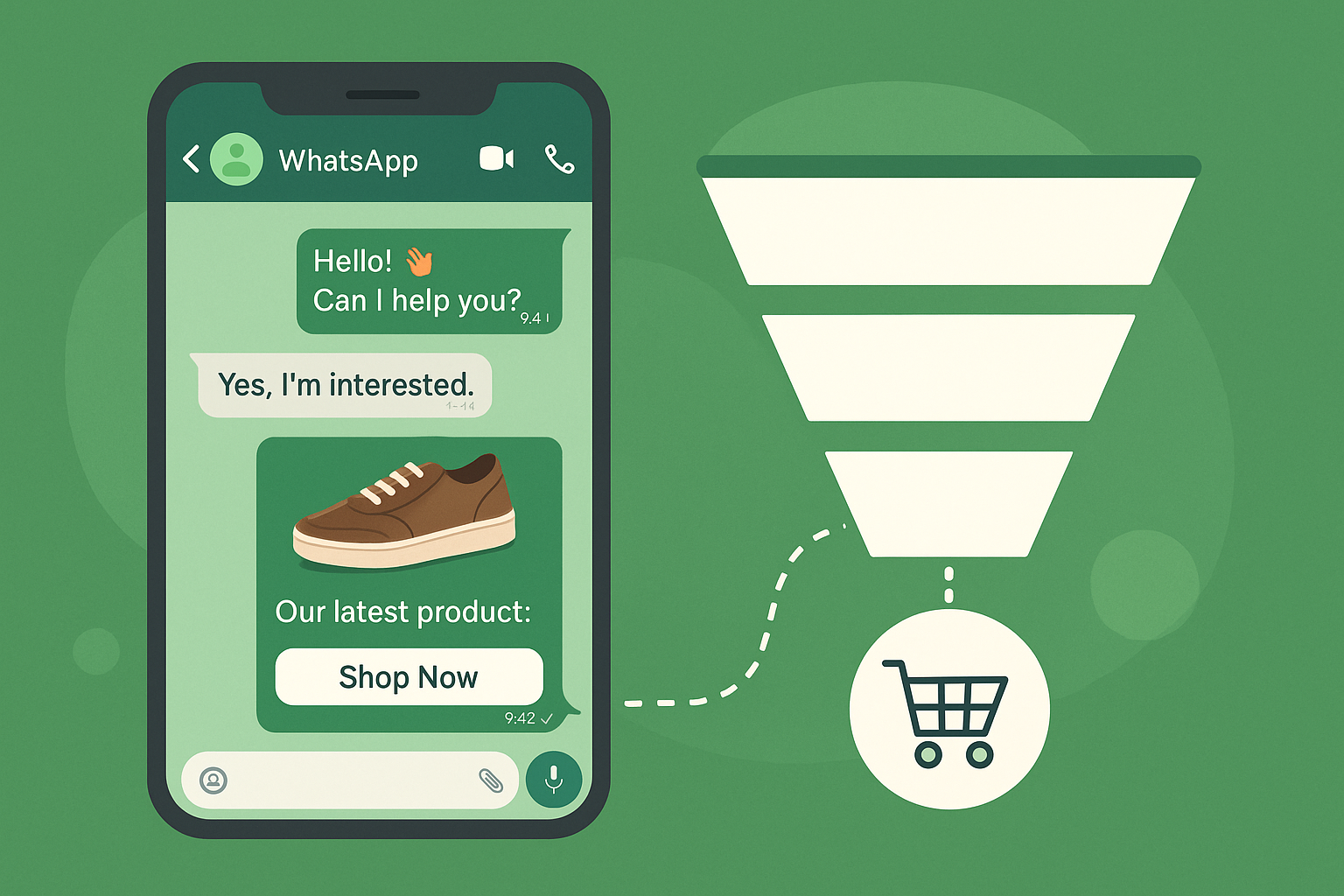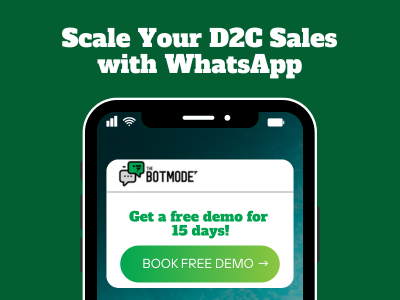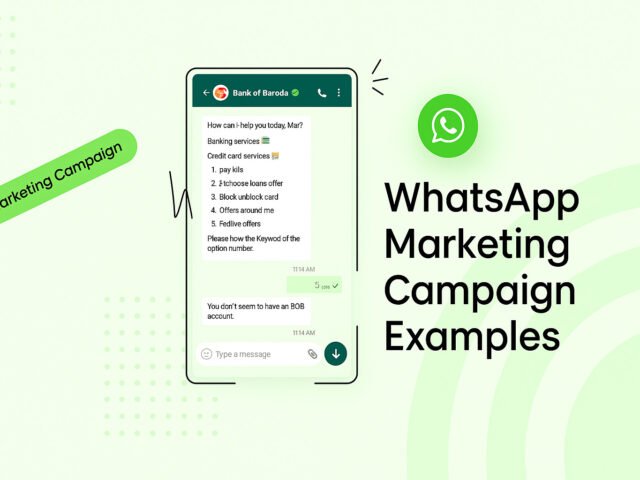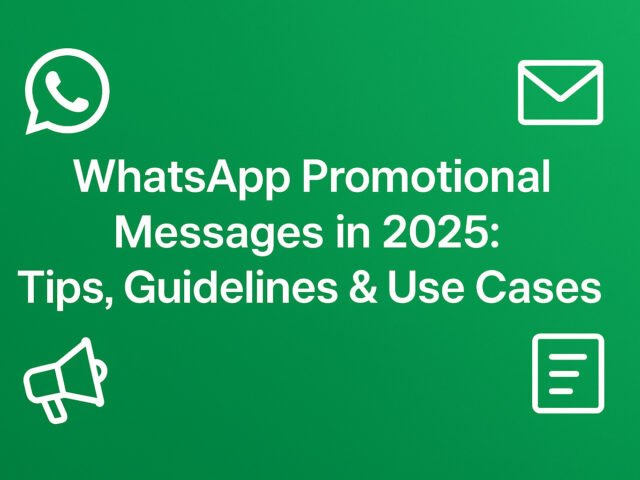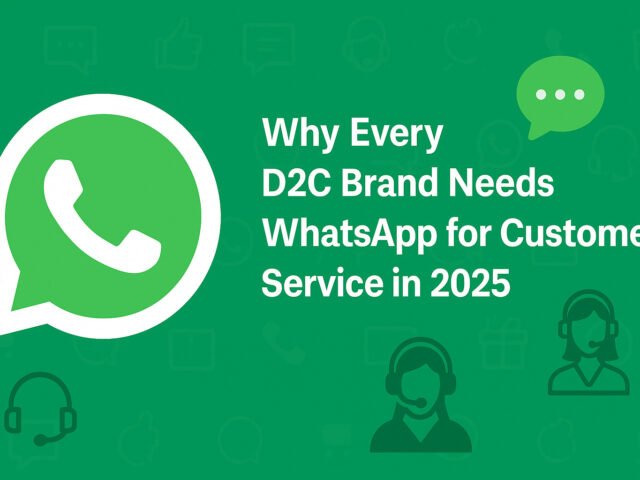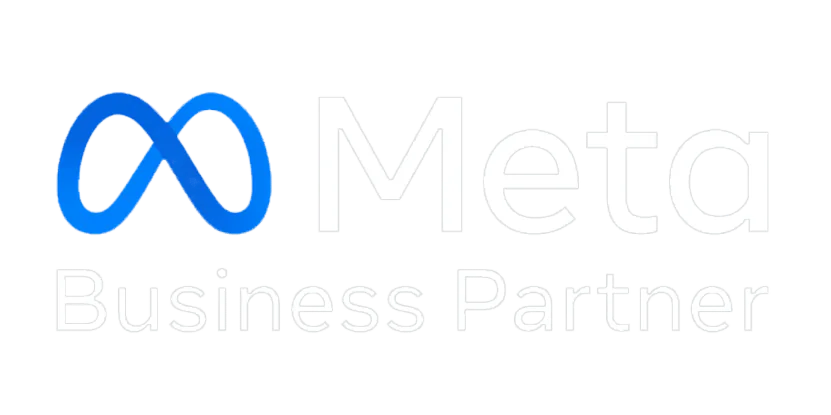Introduction
In 2025, WhatsApp is no longer just a messaging app—it’s becoming a powerful commerce engine. For D2C brands, the real magic lies in turning chats into conversions. Imagine a potential customer clicks “Chat with us,” immediately engages in conversation, and completes the purchase—all without ever leaving WhatsApp. That’s the essence of a well-built WhatsApp marketing funnel.
In this blog, we’ll walk you through how D2C brands can structure, optimize, and scale a WhatsApp funnel—from discovery to retention. We’ll cover strategies, tools, real‑world tips, and pitfalls to avoid.
1. Why WhatsApp Funnels Are Ideal for D2C Brands
- High engagement & open rates
WhatsApp messages boast open rates as high as ~98 %. - Conversational commerce = lower friction
Instead of giving a user a link and hoping they convert, brands can help them buy through chat flows. - Unified experience: chat, browse, pay
With the WhatsApp Business API, brands can integrate catalogs, buttons, and payments so customers never leave the app. - Better ROI & efficiency
Automation and direct messaging reduce wasted spend on retargeting and ad clicks that drop off.
2. The WhatsApp Funnel Stages (Chat → Checkout Pathway)
Here’s a breakdown of key funnel stages in WhatsApp marketing for D2C brands:
| Stage | Purpose | Key Tactics |
| 1. Entry / Discovery | Get people to initiate chat | Click‑to‑WhatsApp ads, website CTA, QR codes, “Chat now” buttons |
| 2. Qualification & Engagement | Understand user needs, segment them | Automated flows, quick replies, menus, prompting questions |
| 3. Product Showcase & Offer | Present product(s) & value | Catalogs, carousels, images + brief descriptions, personalized offers |
| 4. Checkout & Payment | Facilitate the actual purchase | In‑chat payment links, UPI, card integrations, redirecting strategically |
| 5. Post‑Purchase & Retention | Nurture for loyalty & repeat | Order updates, feedback, cross-sell, drip flows, reactivation nudges |
Let’s go deeper into each.
2.1 Entry / Discovery
- Click‑to‑WhatsApp ads
On Meta / Instagram, you can create ads that open a WhatsApp conversation, making the user journey seamless. - Website & product pages CTA
Use “Chat to buy” buttons or “Ask via WhatsApp” for instant assistance. - Offline promos or packaging
QR codes printed on packaging or offline materials that lead to WhatsApp. - Explicit opt-in messaging
Let users know “Tap here to receive offers, help, or product suggestions” so consent is clear.
2.2 Qualification & Engagement
Once a user messages, an automated flow or chatbot should:
- Ask 1–2 simple questions to understand their intent (e.g. “What product are you interested in?”)
- Route them accordingly (catalog, support, custom flow)
- Use quick replies or menu buttons to reduce typing friction
This step helps you segment the user (e.g. new vs returning, product interest) and provide tailored messaging downstream.
2.3 Product Showcase & Offer
- Use product catalogs within WhatsApp (catalog card, image + “view more”)
- Show personalized recommendations based on input
- Use interactive buttons or “buy now” links
- Limited-time offers, bundles, or first-time discounts inside chat
Because the user is already engaged, they’re more likely to act on offers within the same flow.
2.4 Checkout & Payment
This is the pivotal moment:
- Embed payment links (UPI, cards) or direct integration
- If direct in‑chat payment isn’t allowed in your region, send a minimal redirect link only after confirming interest
- Confirm order summary with user: price, shipping, etc.
- Use order confirmation templates pre-approved by WhatsApp to send transaction details
The goal: minimize friction and avoid forcing the user to leave the chat unless absolutely necessary.
2.5 Post-Purchase & Retention
Even after conversion, the funnel continues:
- Send order updates, tracking, delivery alerts via WhatsApp templates
- Trigger drips: usage tips, cross-sell, refill reminders
- Ask for feedback or review
- Use reactivation flows for dormant customers (“Running low on X? Tap to reorder.”)
This helps convert one-time buyers into repeat customers.
3. Common Mistakes & How to Avoid Them
- Spamming too frequently — leads to opt-outs
- Ignoring replies / conversations — customers expect response
- Sending promotions without context — users disengage if messages appear random
- Making checkout painful — too many steps or external redirects kill conversions
- Skipping post-purchase engagement — you lose out on retention and lifetime value
Conclusion
WhatsApp funnels are redefining how D2C brands convert and retain customers. The advantage? You meet your audience where they already are—chat—and carry them gently toward purchase, all within a single app.
To build your funnel:
- Create frictionless entry points
- Automate intelligent engagement
- Showcase and sell within chat
- Retain through post‑purchase drips
If you blend smart tech, human touch, and data-driven iteration, you’ll convert more chats into checkouts—and build loyalty along the way.
FAQs
Q: What is a WhatsApp marketing funnel for D2C brands?
A: It’s a structured chat-based path—from first message to purchase—designed to engage, convert, and retain customers within WhatsApp.
Q: Can a D2C brand sell directly in WhatsApp?
A: Yes, using the WhatsApp Business API + catalog/payment integrations, brands can let users browse and pay without leaving chat.
Q: What tools should D2C brands use for WhatsApp funnels?
A: Choose a BSP (e.g., AiSensy, Kommunicate, Zoko) that supports automation, CRM integration, templates, analytics, and fallback options.
Q: How often can you message customers on WhatsApp?
A: Be cautious. Stick to 1–2 promotional sends per week unless they re-engage. Use templated messages and respect WhatsApp’s 24‑hour window rules.
Q: How do you measure ROI in WhatsApp funnels?
A: Track metrics like delivery rate, open rate, click-through rate, conversion rate, opt‑outs, and cost per conversion. Compare revenue generated vs messaging and tool costs.

